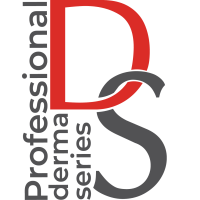Home / Online training / Video lectures / Thematic videos / Sensitive skin syndrome
Sensitive skin syndrome
Sensitive skin syndrome
The overall prevalence of SENSITIVE SKIN SYNDROME is about the same in different countries:
USA – 44.6%
Europe – 38.4%
China – 36%
Sensitive skin syndrome (SSS)
is now defined as less resistance or greater reactivity of the skin in response to normal external and/or internal stimuli, which cannot be considered as ordinary irritants (irritants).
A syndrome is a set of symptoms!!!
These are mostly subjective sensations (burning, tingling, tightness, itching, paresthesias, heat)
In 50% of patients, subjective symptoms are accompanied by weakly expressed objective symptoms of skin inflammation (hyperemia, in severe cases – edema of the papillae of the dermis)
SSS can be characterized as hyperreactive skin to normal external and internal influences.
Localisation of SSS
The most sensitive areas are the nasolabial fold, followed by the chin, forehead and upper lip. Less often, hyperreactivity of the skin is observed on the hands, the upper part of the head, the upper half of the chest, and the genitals
Factors contributing to the formation of SSS
Gender (women report SSS more often than men)
According to research, the prevalence of SSS among women is about 51%, among men – 38%.
This is due to the greater thickness of the epidermis in men and less influence of hormonal factors that lead to increased skin reactivity.
Age – Sensitive skin syndrome is most often observed at the age of 18-50 and decreases with age
Sensitive skin syndrome most often occurs at the age of 21-25 years – 47%.
It then declines and occurs in 20.8% of cases at the age of 51-55
This factor is associated with a decrease in the density of the nerve structures of the skin during the ageing process.
Stress aggravates malfunctions of the neuroreceptor apparatus of the skin.
- increasing the sensitivity of receptors to neurotransmitters (substance P)
- increased secretion of nerve growth factor (NGF – nerve growth factor)
Genetic and constitutional factors – genetically determined tendency to vagotonia (activity of the parasympathetic nervous system)
reactivity of skin vessels
violation of the skin barrier (thinning, decrease in hydration of the stratum corneum)
high transepidermal water loss
decrease in the content of sphingolipids
Exogenous factors (cold, wind, temperature change, UV radiation, dry air)
The B-spectrum of ultraviolet radiation can stimulate the synthesis of vascular endothelial growth factor (VEGF), which is primarily produced by keratinocytes in the skin. Additionally, it can lead to an upregulation of pro-inflammatory cytokines, contributing to an inflammatory response.
Food irritants (alcohol, spices, caffeinated products) that increase vascular reactivity.
Dermatological diseases (atopic, allergic contact dermatitis, rosacea, psoriasis)
Pathogenesis of Sensitive skin syndrome
3 main interconnected mechanisms:
- violation of barrier properties
- violation of the neuroreceptor apparatus of the skin
- persistent inflammation caused by dermatological diseases
Disruption of barrier functions according to Sensitive skin syndrome
Balance of highly specialised intercellular lipids: ceramides, glycosylceramides, phospholipids, cholesterol, fatty acids, sphingoid bases, etc.
- the main barrier preventing transepidermal moisture loss
- intercellular cementing substance that ensures the strength of the adhesion of horny scales
- form a water-lipid mantle on the surface of the skin, containing in its composition lipids of the stratum corneum, sebum, secret of sweat glands
All this provides the barrier functions of the skin!!!
Malfunction of the neuroreceptor apparatus of the skin in SSS
Represented by numerous afferent and efferent fibers + encapsulated nerve endings.
Afferent fibers, responsible for receiving impulses from the outside, are connected to encapsulated nerve endings
(lamellar corpuscles of Father-Pacini, end bulbs of Krause, tactile corpuscles of Ruffini, tactile corpuscles of Meissner, genital corpuscles of Dogel, etc.), which are located in the dermis and are mechanoreceptors.
Afferent fibers are also connected to free endings (noci- and thermoreceptors) present in the epidermis and dermis.
Nerve impulse transmission is carried out with the help of neurotransmitters, which in the skin are represented by substance P and a peptide, the synthesis of which is encoded by the calcitonin gene (CGRP – calcitonin gene-related peptide)
- substance P causes vasodilatation and degranulation of mast cells
- increased release of neurotransmitters is observed during psycho-emotional stress, pathological processes in the skin and causes the activation of the production of pro-inflammatory cytokines
- increased inflammatory response
- NGF – a peptide sensitises sensitive receptors to various thermal, mechanical and chemical stimuli, which contributes to the induction of itching and other subjective sensations.
Persistent inflammation in Sensitive skin syndrome
Persistent inflammation caused by dermatological diseases
- Rosacea
- Atopic dermatitis
- Allergic contact dermatitis
- Psoriasis
Sensitive Skin Syndrome = ROSACEA diagnosis
Stage 1 – erythematous
Stage 2 – papulopustular
Stage 3 – phymatous
Stage 4 – ophthalmosis
Keratinocytes and Langerhans cells increase the production of pro-inflammatory cytokines – tumor necrosis factor α, interleukin-1, responsible for vascular reactivity in transient erythema
The main methods for Sensitive skin syndrome
Topical therapy (emollients, calcineurin inhibitors, antihistamine receptor blockers, glucocorticoids)
Systemic therapy (desensitization – membrane stabilizers, antihistamines, detoxification – sorbents, restoration of microflora – pro-/prebiotics)
Tasks of a dermatocosmetologist in Sensitive skin syndrome
- Exclusion of triggers!!!
- Restoration of barrier function – fatty acid balance
- Restoration of the microbiome – probiotics
- Moisturising the skin – saturation of the skin’s natural moisturising factor
- Selection of daily home care
Recommended articles
- Hydrolipid barrier: why is it so important for the skin and how to restore it?
- Seasonal allergies and their effects on the skin: a dermatologist’s view
- Hypersensitivity of the skin: How to get rid of discomfort?
- GLYCOSPHINGOLIPIDS: What are they? What are they for? Who needs them?
- Reaction to creams – is the cosmetic product always to blame?


